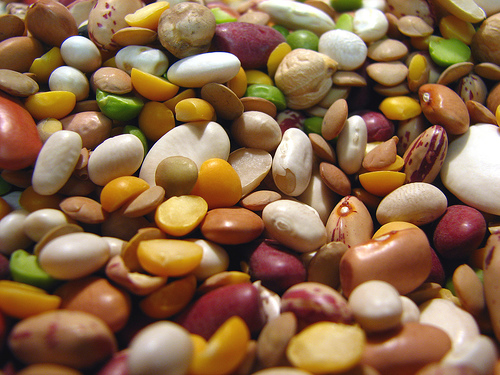What Are Legumes?
Redbeans, redbeans, in a pot, the more you eat em the more you…….well you should know the rest. Beans get a bad name because of a certain gas related reputation. After reading the article below, you will definitely need to add beans or Legumes to your current diet to maximize your current nutrition and fitness routine.

You’ve probably heard that legumes are good for you, but what are legumes, and how can we increase our daily intake of these healthy little beans?
Dole Nutrition state that:
“There are two types of legumes: mature and immature. Mature legumes are the dried seeds found inside pods that hang from the stems of certain plants. They are excellent sources of fibre (approximately 15 g/cup), rich in protein, and low in fat…Green beans and peas, commonly referred to as vegetables, are actually immature legumes because they are harvested before maturing on the plant.”
Well known legumes include alfalfa, clover, peas, beans, lentils, lupins, and peanuts (a peanut is a legume whose pod does not split open on its own).
Why should we add more to our diets?
- Excellent source of protein.
- Good source fiber.
- Low in fat.
- Most varieties provide half our folate requirements.
- A good source of phosphorus, potassium, iron, zinc, calcium, and selenium.
- Contain Thiamin (B1), Riboflavin (B2), Niacin (B3), B5 and B6.
- Rich in antioxidants.
- Low Glycemic Index.
What counts as a serving?
A serving is 3 heaped tablespoons of beans. Remember, beans and pulses count as a serving of your daily vegetable requirements, but only as 1 portion, no matter how many you eat.
Some other interesting facts…
Below are a list of the nutrient highlights from some of the more commonly consumed bean varieties, taken from Dole Nutrition:
- Red beans – top antioxidant bean containing more antioxidants than blueberries when compared gram-per-gram. Reds are also the top bean source of iron.
- Kidney beans – second ranking antioxidant bean on the USDA’s list, and are also a top fibre source.
- Black-eyed beans – these beans contain more calcium than any other bean, as well as being a source of folate and magnesium.
- Black beans – in addition to ranking among the best antioxidant bean sources, black beans are the top bean source of magnesium.
- Pinto beans – the top bean source of selenium, they are also ranked higher than the blueberry in their antioxidant power.
How to increase your intake of these wonderful beans
- Choose beans as your protein source instead of high fatty meats, or dairy products regularly.
- Change your favorite recipe by replacing half of the meat with legumes.
- Stock your pantry with a variety of canned legumes for a quick meal, or side dish.
- Prepare soups, stews and casseroles with added beans.
- Have a vegetarian day once each week.
- Try a new legume each week – most supermarkets stock a wide variety of both dried and canned.
- Vary your lunches with a bean soup, or salad, instead of your normal sandwich.
- Use pureed beans as the basis for dips and spreads.
- Snack on a handful of soy nuts rather than crisps or chocolate.
Remember, many canned beans are high in added salt, look out for the ‘no added salt’ versions, and always rinse throughly with cold water before adding to your recipes. Check out the Lowdown on Food Labels, for more details on what to look out for when purchasing food items.